From the Holy Land to Rheinhessen?
The "pagan tower churches" are famous - the name already gives it away - because of their unique, oriental-looking tower shapes and crowns. Why they look so special, in fact, can not be said without a doubt nowadays. But there are two mysterious and one rather sober theory.
The towers of all four churches were built in the period following the First Crusade, which Pope Urban II called for in 1095 and which ended with the capture of Jerusalem in 1099. It is therefore possible that the architectural gems are victory messages of returned crusaders, which they built to commemorate the "liberation" of the Holy Land - inspired by the architecture there, which for them was pagan.
The second theory goes even a little further. To commemorate their pilgrimage to the tomb of Jesus, the Crusaders built the towers as a replica of the Holy Sepulchre Church, which no longer exists in its former form. If this is true, an idea of the former architecture of the Church of the Holy Sepulchre would be preserved in the four Rhenish replicas.
A third theory could bring all gushers back down to earth a little. Recent construction research suggests that the towers could "only" be a very old Worms building tradition. However, since the church towers have been called "pagan towers" or "Saracen towers" in the vernacular for quite some time and their oriental appearance cannot be denied, one is not sure about this either.
Whichever theory may be true, a visit to the four special sites is always mysterious!
Heidenturm Church Guntersblum
My oriental journey through Rheinhessen begins in the lively wine village Guntersblum. On the beautiful forecourt of the Protestant Church I take a first look upwards. In fact, I have never seen such peculiar church towers before. It almost looks as if there is still a small miniature church on each of the two towers.
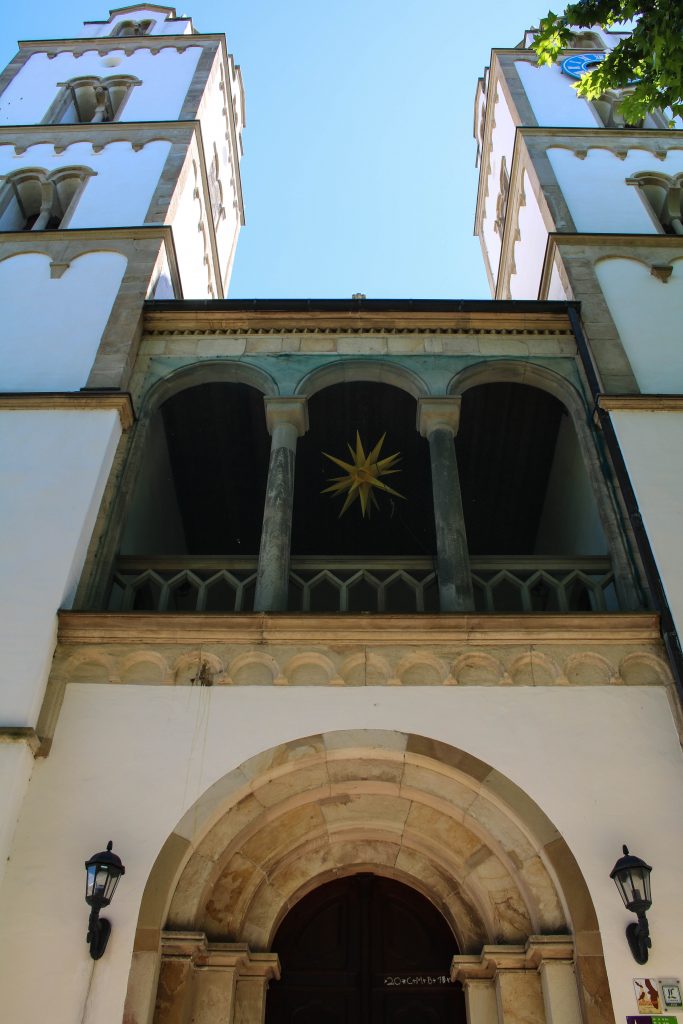
Horst Dehmel, Guntersblum local historian with ecclesiastical roots, tells me that the north tower of the church is the oldest surviving structure in Guntersblum; the south tower collapsed in 1702 and was not rebuilt true to form until 1842. But how old is the original? During a major renovation in 2003 and 2004, samples were taken from the tower beams. Their examination showed that the processed tree was felled in the early summer of 1101, exactly in the period after the First Crusade.
Dehmel remembers "scrambling around" inside the tower himself during the renovation. After all, as an amateur photographer, you can't pass up this unique opportunity. "Between the old beams, you can feel the breath of the Middle Ages," he enthuses. To this day, that is one of his fondest memories in connection with the Heidenturm church in Guntersblum - along with his wedding, of course.
We also look at the interior of the church. It fits in well with a wine village. The elaborately designed brass chandelier with vine leaf motifs from 1880 testifies to the importance of viticulture for the faithful in Guntersblum, and the pedestal painting also contains wine symbols. Horst Dehmel finds this very successful, because there are also many wine motifs in the Bible.
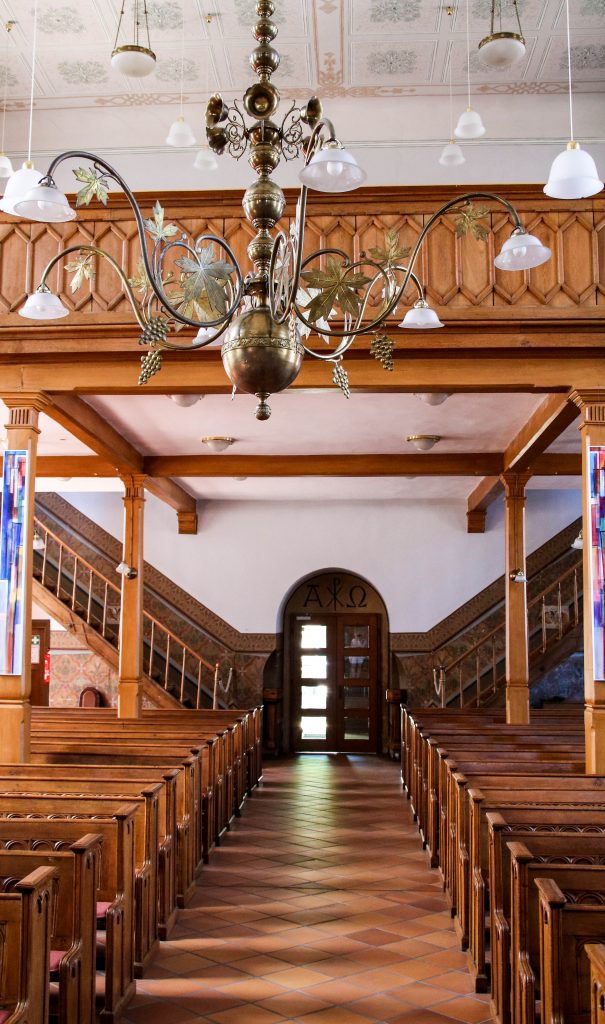
Finally, he tells me a nice anecdote on the church square. If you live in Guntersblum, you don't have to go to Pisa, because you also have a "leaning tower" here. In fact, the north tower has a (now also for me) recognizable leaning, which is especially noticeable about the alignment of the two towers. How good that he is therefore quite particularly anchored!
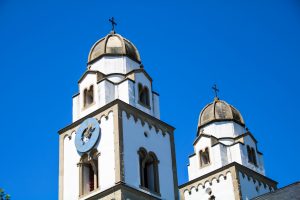
Heidenturm church Alsheim
Next, I head for the Evangelical Church of St. Boniface in Alsheim. All four Heidenturm churches are within a radius of 20 kilometers, so it's wonderful to visit them in one day. It is the smallest of the four and is somewhat hidden in a beautiful old cemetery park.
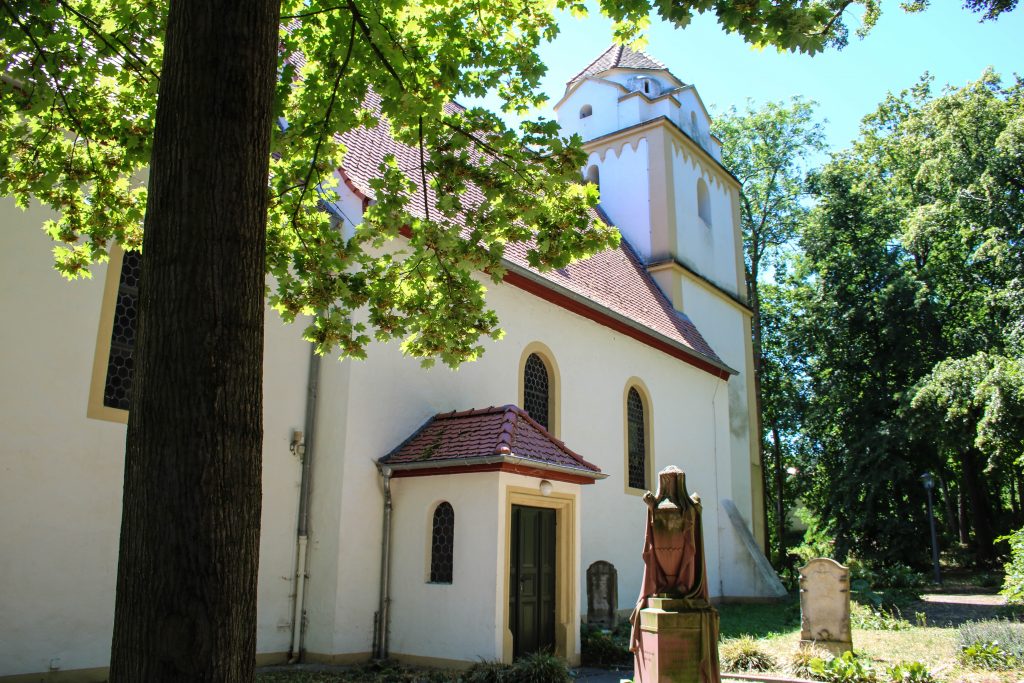
I open the wrought-iron gate and enter another world - somehow quieter, more contemplative and enchanted. Alone in the cemetery, which is no longer used for funerals these days, I could linger for hours. The old trees provide cool shade on a hot day like today. I look at gravestones that date back to the 19th century. Some of them are overgrown with ivy or roses, others are already half sunk into the earth.
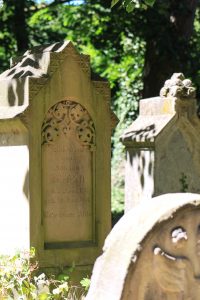
But of course I am here because of the Heidenturm. Unlike Guntersblum, the Alsheim church has only one. It, too, has the characteristic shape of the so-called "crusader's helmet", but differs significantly from the Guntersblum towers in other features. Each Heidenturm church is unique!
The church itself is small, but charming. By the way, if it is not open, you are welcome to ask for the key at the rectory. It is worth it, because it is a little jewel!
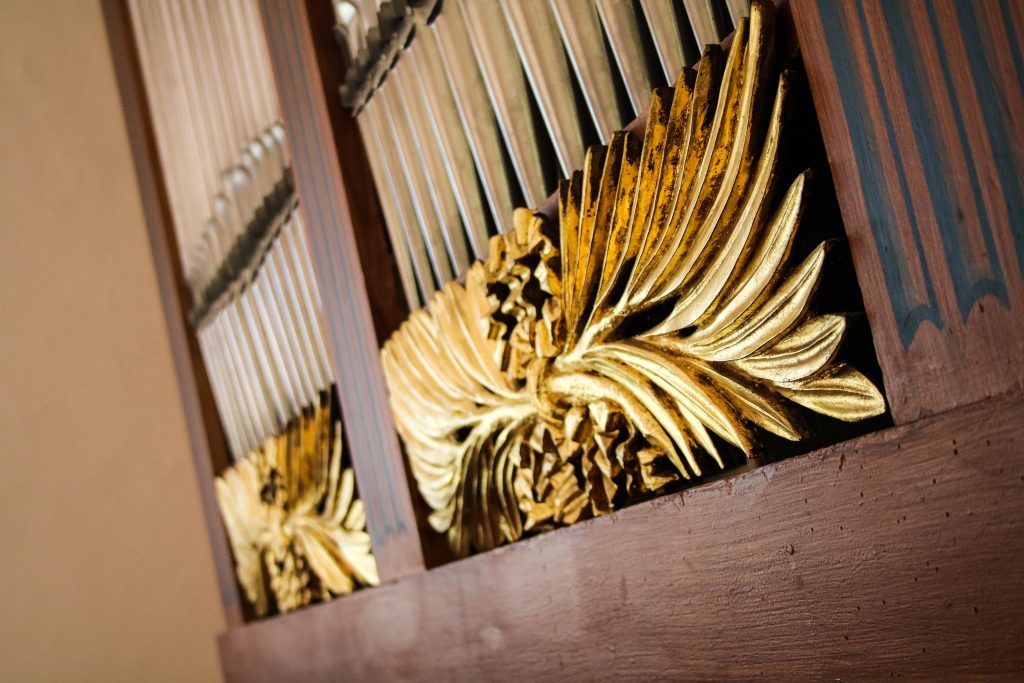

Heidenturm Church Dittelsheim-Heßloch
Not far from Alsheim lies Dittelsheim-Heßloch. You can't miss the Protestant church here, and the Heidenturm in gleaming white is recognizable from afar. It is considered the most beautiful of the four towers. However, I don't know if I could decide - and I haven't seen them all yet.
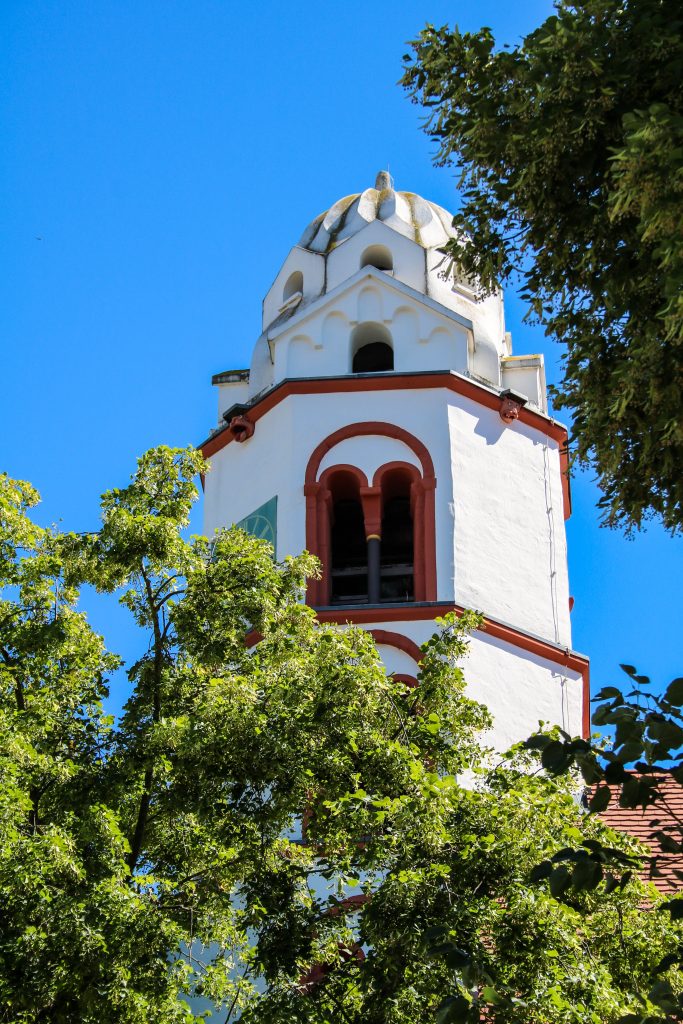
I meet Gerd Rothfuß, the first chairman of the church congregation, and thus could not have found a better church guide. He has dedicated himself heart and soul to his parish and can tell countless stories. For example, that the special church tower, which has been preserved again and again with great commitment over many centuries, attracts more and more visitors. For this reason, one can look at small models of all four church towers in Dittelsheim-Heßloch and thus recognize differences and similarities particularly well.

Gerd Rothfuß shows me the sculpture of Christ hanging in the center of the church. From a distance, I think it represents Jesus on the cross. As I step closer, however, a "living Jesus" reveals himself, spreading his arms openly and invitingly. For him, this sculpture is the most beautiful thing about the church, even ahead of the unique pagan tower and the valuable altar Bible from 1765. The Worms sculptor Gustav Nonnenmacher carved it in the post-war years and was rewarded for it - how could it be otherwise in Rheinhessen - with a barrel of wine.
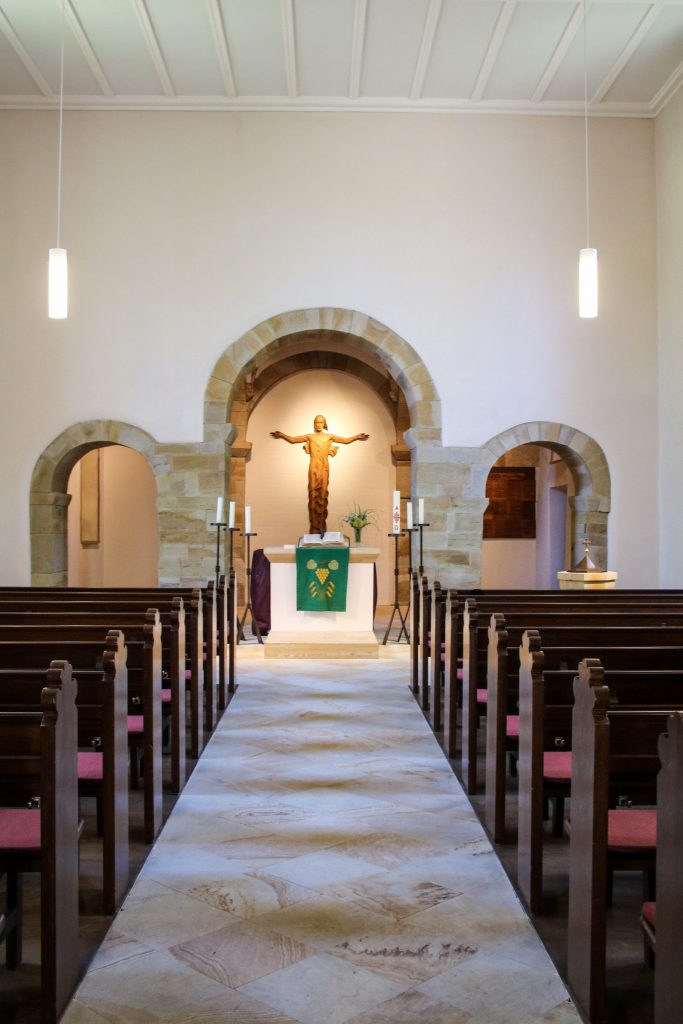
Heidenturm Church Worms
At the end of my oriental journey through Rheinhessen I drive to Worms. The fourth Heidenturmkirche is also the only Catholic and even Dominican monastery with novitiate. Unfortunately, the two towers of St. Paul are scaffolded during my visit. But I can still see that they again look a little different.
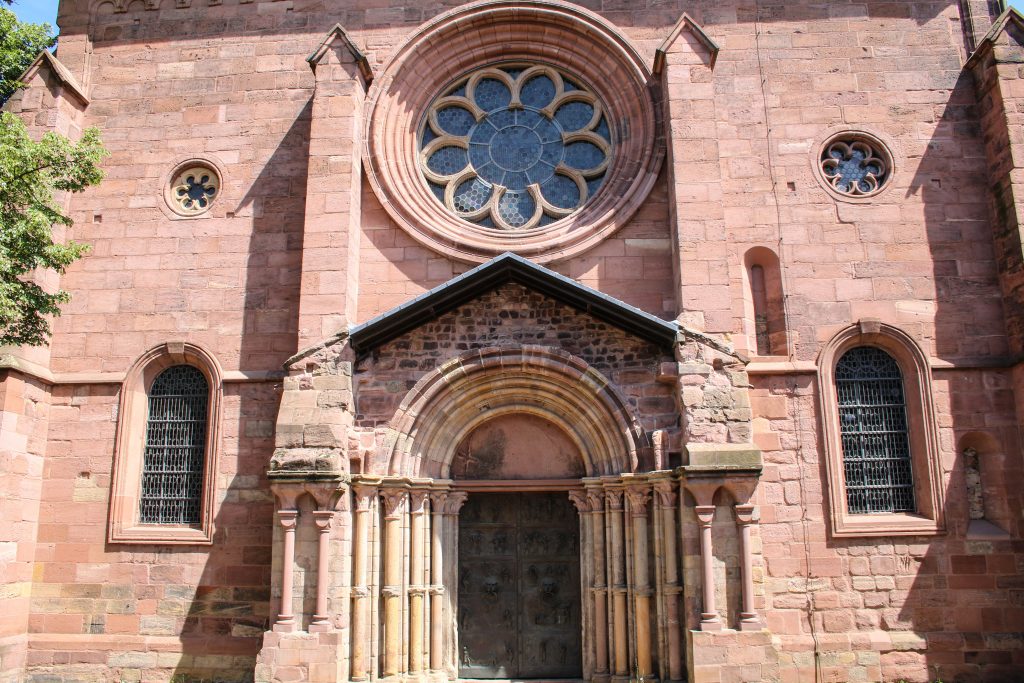
Father Laurentius Höhn, novice master of the Worms convent, always likes to summarize the eventful history of the Heidenturm church with "world - church - world - church". Originally, the site was a castle of the Salian counts before it was consecrated as St. Paul's Monastery in 1002. Then began the construction of the famous double towers, which were crowned in 1105 (south tower) and 1108 (north tower) with the distinctive stone domed helmets.

During the secularization by Napoleon, the monastery was used for decades as a storage room and workshop. In 1881, the Paulus Museum moved into the venerable walls. Incidentally, the imposing door wing of the church was added during this "secular" period and is a copy of the Bernward doors of Hildesheim Cathedral. Finally, in 1929, the museum moved to the Andreasstift and the Heidenturmkirche became a Dominican monastery.
Inside the church, Father Laurentius shows me where he prefers to be: the Romanesque apse behind the Baroque high altar, a special gem that serves for services on a smaller scale or simply a quiet prayer.
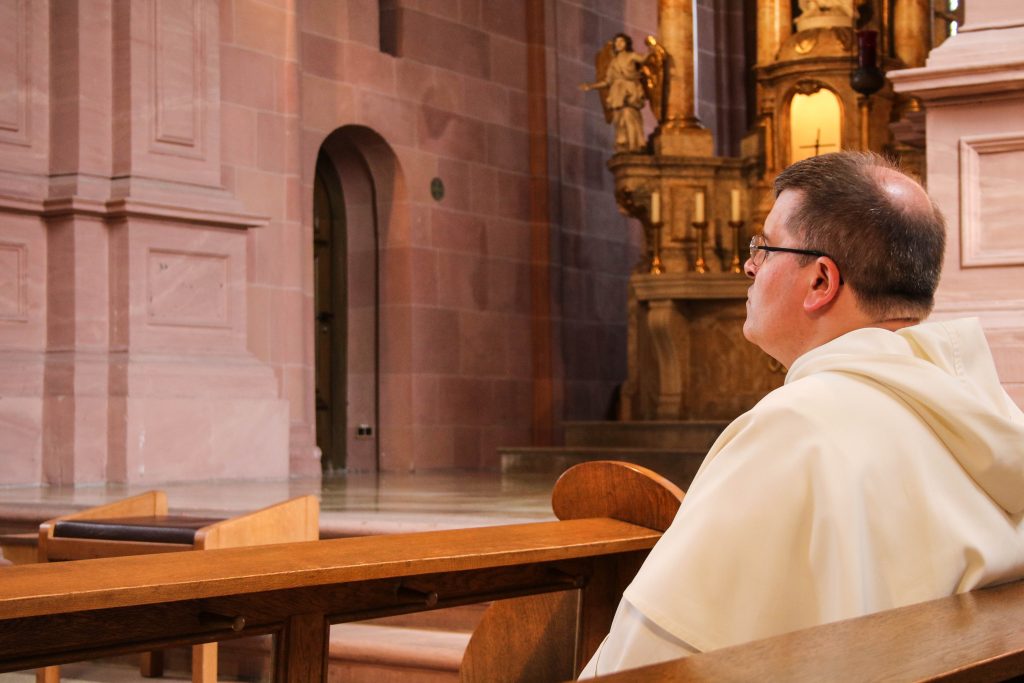
I only like the enchanting inner courtyard of the monastery a little better, a green oasis of peace in the midst of the bustling city. A wide variety of flowers bloom here, ivy grows along the monastery walls, and a fountain gurgles in the center. Normally, the courtyard is not open to the public. However, there are always events that take place here, and thus allow a look behind the scenes of the monastery. It is worth it!
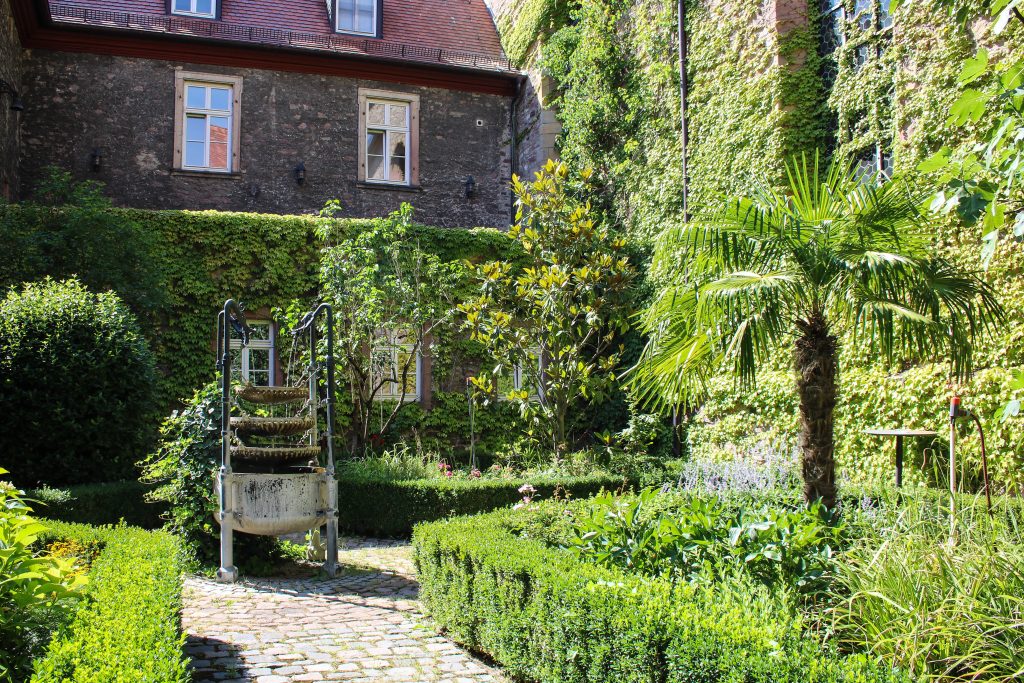

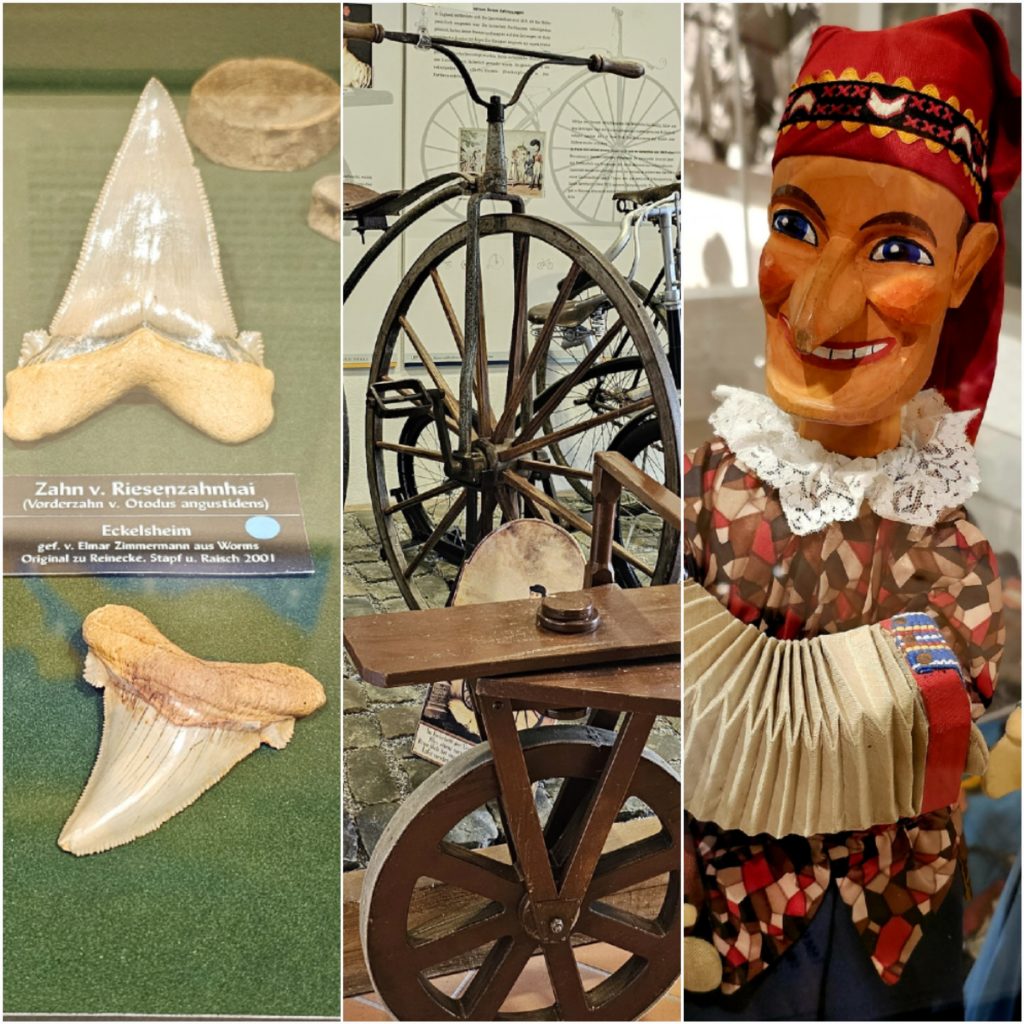
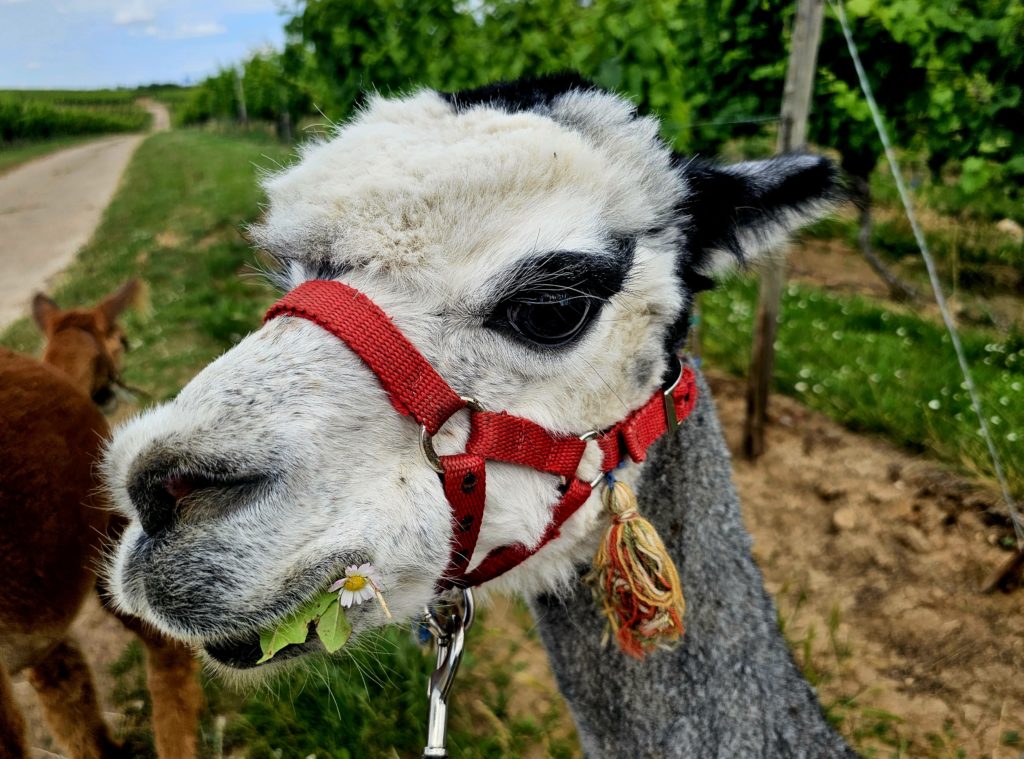
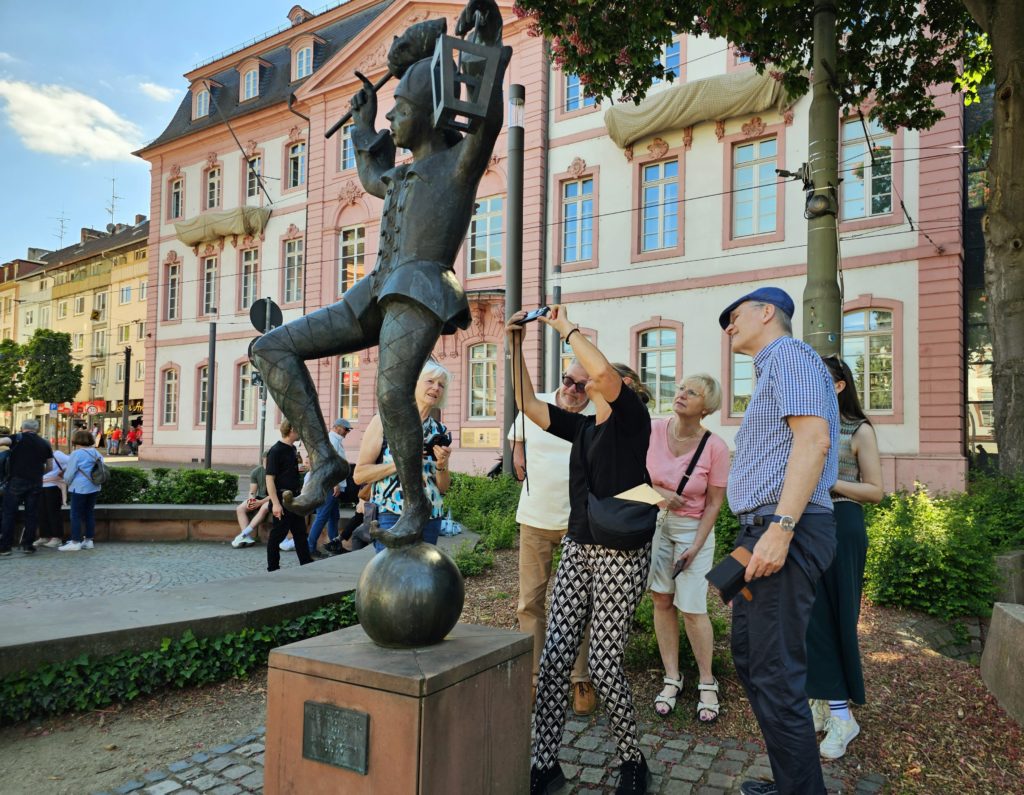
2 Responses
Doesn't Gau-Bickelheim also have a "Heidenturmkirche"? Then there would be 5 churches in Rheinhessen with this kind of tower roofs.
Heidenturmkirchen are a real rarity in Germany, lucky that there are four of them in Rheinhessen, but unfortunately there are not more. You can get a good insight into the history of the Heidenturmkirchen here, among other places: https://www.regionalgeschichte.net/rheinhessen/rundgaenge/heidentuerme-in-rheinhessen.html